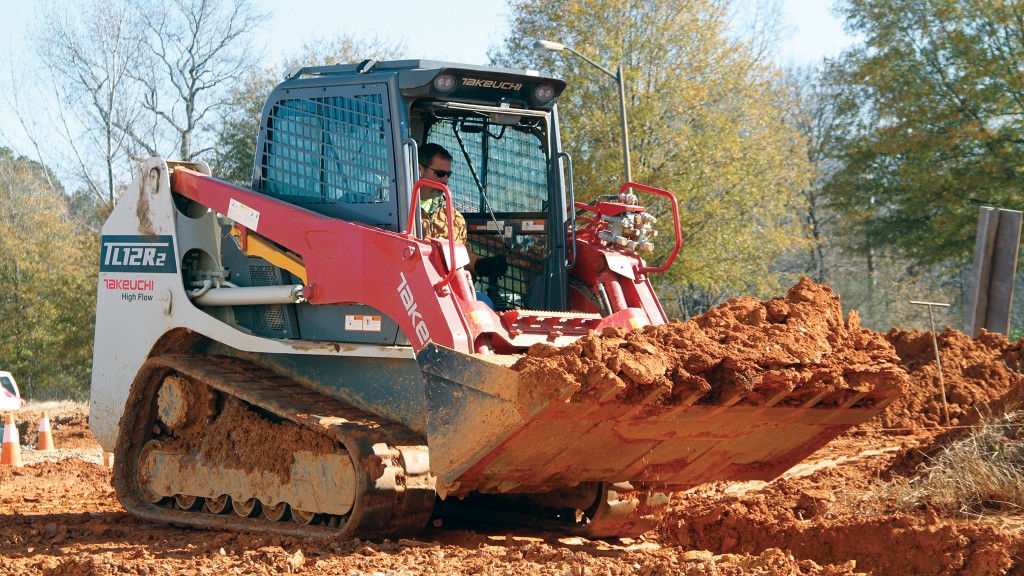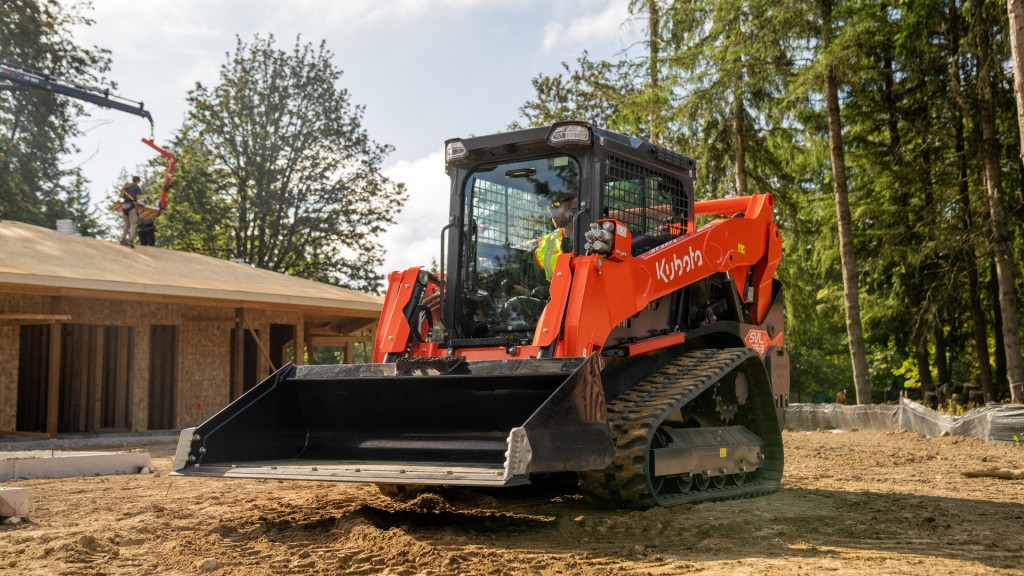
Many different factors are contributing to the compact equipment market's growth, including increased spending on residential building and construction overall. Out of all the different compact equipment categories, compact track loaders (CTLs) have become the most popular. Their high traction, low ground pressure, and significant pushing power have made them indispensable on many construction sites. And, when the machines are outfitted with the proper hydraulic systems, they can use an ever-growing number of attachments.
Advanced hydraulic systems expand application opportunities
Hydraulic systems have become increasingly sophisticated over the past few years while also offering better lifting capacity and breakout forces thanks to larger pumps and higher pressures. These systems can help CTLs and other carrier machines perform tougher jobs without requiring more horsepower, which keeps both emissions and costs down. While that fact is certainly important, it's the hydraulic system's ability to connect the CTL to multiple attachments that sells these machines to prospective buyers.
"Today's hydraulic systems make so many tasks possible," said Joseph Huling, national service and training manager for Takeuchi-US. "In the past, you couldn't use a CTL to remove snow, clear land quickly and efficiently, or handle large quantities of materials, for example. Advanced hydraulics make CTLs into little powerhouses that can do so much more than lift and place materials. When potential buyers see how much CTLs can do, they realize that they'll be able to get a really good return on their machine investment."
Before these advanced hydraulic systems were available, CTLs could only use a limited number of attachments for shorter periods of time.
"Because today's hydraulic components and cooling systems are so efficient, operators can outfit their carrier machines with hydraulic attachments and use those attachments longer," Huling said. "As a result, CTLs are now more productive in various ways. You can get so much more done with just a single machine. Thanks to hydraulic systems and attachments, you may not need to own or rent multiple machines."
Because machine owners and operators often rely heavily on the hydraulic systems on their CTL, it's imperative to keep them in top working condition – and that starts with pairing these systems with the right attachments.
Attachments that exceed the carrier unit's pressure specifications and hydraulic flow, or max out the carrier unit's settings, will cause increased wear and tear on the machine. Furthermore, using attachments that are undersized relative to the machine's minimum flow and pressure settings can overburden the system. This could damage the attachment, seals, components, and hoses. Other than using the right attachments, keeping hydraulic systems in good condition comes down to proper maintenance.
"Proactively performing regular, routine maintenance on your CTL's hydraulic system is essential to protect it from even the smallest contaminants," Huling said. "You simply can't wait until there's a problem before you take action. Advanced hydraulic systems are more refined, making them extremely sensitive to contamination. If you don't keep the system clean, you could drastically shorten its life. Or, if the situation is severe enough, you could even destroy its components."
Hydraulic system maintenance schedule for compact track loaders
According to Huling, Takeuchi recommends the following hydraulic system maintenance schedule for CTLs:
Daily hydraulic maintenance for CTLs
Check fluid levels, then drain any fuel/water separators. Look around the machine for damaged lines, cylinders, and hydraulic leaks. Clean hydraulic attachment couplers before connecting to the machine. Check hydraulic oil temperatures, particularly when running high-flow attachments like mulching heads. Remove any potentially flammable debris from the machine's belly.
Weekly hydraulic maintenance for CTLs
Check the machine over for any loose fasteners, repair any damages, and adjust the track tension.
Monthly hydraulic maintenance for CTLs
Clear any debris from the machine. Clean the radiator and cooling package fins to ensure sufficient airflow, then inspect and replace engine air filters.
Annual hydraulic maintenance for CTLs
Take fluid samples to ensure hydraulic oil and vital components are at acceptable particle levels. Always replenish fluids according to the manufacturer's recommendations. Check and replace the fan belt if needed. Inspect the machine's undercarriage.
Other hydraulic maintenance for CTLs
Most manufacturers have a new machine "break-in" period, typically after the first 50 hours of operation, and they recommend checking hydraulic components at that time. Follow scheduled (hourly) maintenance when replacing hydraulic oil and filters.
"Inspecting and draining the fuel/water separator each day is very critical with today's common rail diesel engines, as well as checking the machine's fluid levels," Huling said. "If you do that and remove debris from the CTL's belly pan, loader arm towers, and hydraulic cooler as needed, you'll get more consistent performance and less downtime."
Keep your CTL clean and inspect attachments
While routine maintenance is critical for the life of your CTL's hydraulic system, so is cleanliness. Keep dirt and other contaminants from entering the machine's hydraulic system when swapping out attachments on the job site by cleaning the attachment's fittings, both on the machine and the attachment itself, before connecting it. When removing a hydraulic attachment from the CTL, clean the automatic fittings and protect them from debris during storage and usage intervals. If the carrier unit is low on hydraulic fluid, clean the refill cap and surrounding area before replenishing it.
"It's also very important to connect only attachments that are new, inspected, or known to be in good working condition," Huling added. "Otherwise, you may introduce contaminated oil into your machine from a used attachment. Or, even worse, you could connect a failing attachment to your CTL and damage the carrier unit's hydraulic components. For this very reason, before buying a hydraulic attachment from an unfamiliar source, it's a good idea to have a reputable dealer or hydraulic specialist inspect it."
There are also operational best practices that can help ensure CTL hydraulic systems aren't subjected to unnecessary wear and tear. When applicable, ensure the attachment's cutting teeth are sharp, remove any material build-up from the attachment housing and allow attachments to do their jobs without requiring additional force from the machine itself. Plan for adequate cooling intervals between operational cycles to ensure you're not operating the machine outside of normal operating temperatures and straining the hydraulic system.
"All in all, if you take care of a CTL's hydraulic system, it will take care of you," Huling said. "Follow the manufacturer's maintenance recommendations and timing. That's the most important thing you can do to keep your hydraulic system running smoothly and avoid a breakdown while on the job. Yes, it takes more time and effort to perform daily, weekly, monthly, and annual services, but it will pay off with greater machine productivity and longer machine life."



